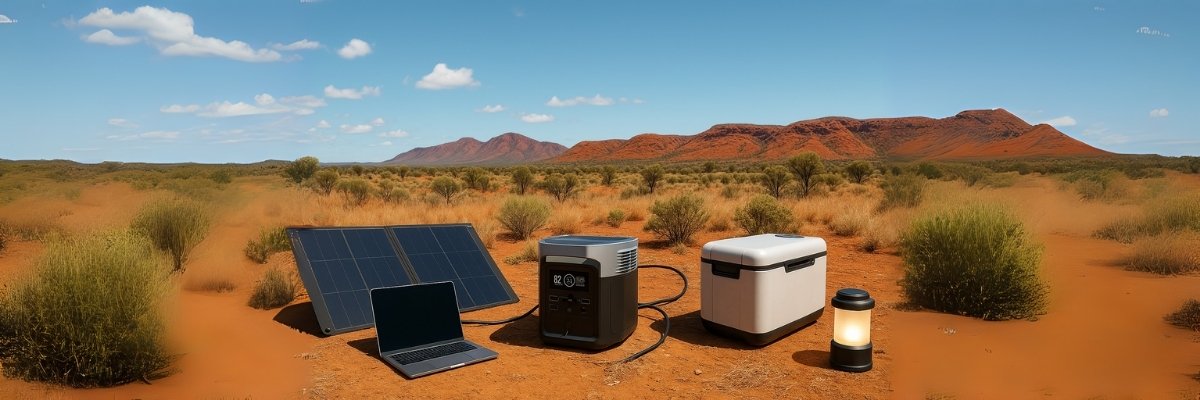
How Does a Portable Power Stations Work?
Portable power stations are changing the way Aussies stay powered on the go. Whether you're camping, facing a blackout, or working remotely, these compact devices pack serious energy — quietly and efficiently. Let’s unpack exactly how they work so you can pick the right one for your lifestyle.
Not sure which power station is right for you?
Take the quiz!
The Core Components of a Portable Power Station Generator
The Battery: The Energy Storage Heart of Your Generator
Lithium-Ion vs. LiFePO4: Understanding Battery Chemistry in Your Generator
The type of battery inside your power station affects everything — weight, lifespan, safety, and cost. Lithium-ion batteries are lightweight and energy-dense, great for everyday portability. LiFePO4 (Lithium Iron Phosphate) batteries, though heavier, offer longer lifespans and are known for thermal stability, making them safer in the Aussie heat.
Capacity in Watt-Hours (Wh): How Much Power Your Generator Stores
Watt-hours (Wh) tell you how much energy your generator can store. A 500Wh unit could charge a laptop 10 times or run a 50W fridge for 10 hours. Match your devices’ needs with the station’s Wh rating to avoid running out of juice too soon.
The Inverter: Converting Power for Your Portable Generator
DC to AC Conversion: Powering Household Appliances with Your Generator
Batteries store energy in DC (direct current), but most household devices use AC (alternating current). The inverter makes the switch, allowing you to plug in your kettle, laptop, or fan like you would at home.
Pure Sine Wave Output: Ensuring Clean Power for Sensitive Devices
High-quality power stations use pure sine wave inverters. This ensures smooth, clean electricity for sensitive gear like CPAP machines or high-end laptops — just like you'd get from the grid.

How a Portable Power Station Generator Works: The Full Journey of Power
Charging Your Portable Power Station Generator
Wall Charging: Fast and Convenient Power-Ups for Your Generator
Just plug the charger into the wall and into your station. Charging time varies based on battery size and input speed, but it’s the go-to method when you're at home or in a cabin.
Solar Charging: Harnessing Renewable Energy for Your Generator
In sunny Australia, solar’s a no-brainer. Set up foldable solar panels, connect via the DC input, and let nature do the work. It’s slower than AC charging but eco-friendly and off-grid ready.

Benefits and Applications of Understanding Your Portable Power Station Generator
Empowering Your Adventures with a Capable Generator
Camping, RVing, and Outdoor Events: Reliable Power with Your Generator
From remote campsites to bush festivals, a generator lets you bring the essentials — lights, music, cold drinks — without worrying about plugs.
Remote Work and Mobile Offices: Staying Connected with Your Generator
For digital nomads and mobile tradies, power means productivity. Keep your laptop, Wi-Fi, and tools running no matter where you are.
You Might Also Like:
- Can Portable Power Stations Be Used Indoors?
- Do You Have To Charge A Portable Power Station?
- How Long Does It Take To Charge A Power Station With Solar Panels?
- What Is The Difference Between A Power Bank And A Portable Power Station?
- What To Look Out For When Buying A Power Station?
- Best Portable Power Station For Hurricane


